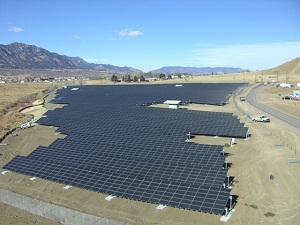Solar Energy Week in review: Before summer explodes, solar does
 Last week was a busy one for solar energy in the US and around the world. From explosive growth in Japan and at-parity projects in Spain, to an expected 20 percent growth in the US, solar is preparing for its sunniest season yet. Much of that growth will be driven in the US by states’ actions, which include expanding existing programs in states like Colorado and working to create better roadmaps in other states, like North Carolina. Stocks of publicly traded PV companies are also showing growth again, with some analysts anticipating that it may again be time to start considering solar stock purchases.
Last week was a busy one for solar energy in the US and around the world. From explosive growth in Japan and at-parity projects in Spain, to an expected 20 percent growth in the US, solar is preparing for its sunniest season yet. Much of that growth will be driven in the US by states’ actions, which include expanding existing programs in states like Colorado and working to create better roadmaps in other states, like North Carolina. Stocks of publicly traded PV companies are also showing growth again, with some analysts anticipating that it may again be time to start considering solar stock purchases.
Japan may double the 7.4 gigawatts of solar it's already installed, bringing its total installed solar to nearly 15 gigawatts in 2013. The market is exploding thanks in large part to the country’s aggressive feed-in tariff, which was enacted last year in response to the Fukushima nuclear disaster in 2011. The market is buoyed further by the steep drops in PV prices over the past few years.
Meanwhile, on the other side of the Eurasian land mass, Spain is now seeing solar at parity with other energy sources at the commercial scale. Already at least one company, Conergy, has installed 1 megawatt of PV arrays at commercial sites that are at parity with grid-supplied electric costs. In all, Conergy, a German-based, vertically integrated PV manufacturer and developer, said it has installed 56 projects at parity in Spain.
Similarly the solar market is anticipated to grow by 20 percent in the US in 2013, which would mean 4.3 gigawatts of newly installed PV in 2013, according to a new report from NPD Solarbuzz. However, the report doesn’t include all the concentrating thermal solar coming on line this year. While it will be a record for the US, it will still be behind Japan and other countries. The growth in the US shows that solar is becoming increasingly popular. The report also anticipated more US solar growth in 2014, when it anticipates that it will grow to 5 gigawatts.
Much of the growth in the US will be driven by state policy. For instance, Colorado Gov. John Hickenlooper (D) signed into law SB13-252, which expands the amount of solar, wind and other renewable power that the state’s large rural electric cooperatives must have in their generation portfolio. The new legislation doubles the amount of clean energy that these large co-ops must have in their generation portfolio to 20 percent by 2020.
Other states like North Carolina are working on policies that will help expand solar there. The North Carolina Sustainable Energy Association (NCSEA) and the North Carolina Solar Center recently held the first in a series of forums that brought together various interested parties, in an attempt to create a guidebook for going solar that municipalities across the state can use to make it easier for people there to go solar.
With all this positive news, maybe it’s no surprise that industry analysts may be starting to reconsider solar stocks as a viable purchase. For a while, analysts were very bearish on solar stocks, given that the industry remained in a constant glutted state, but now it appears supply and demand are starting to balance out and solar stocks appear to be rising again.



